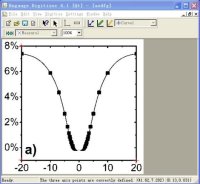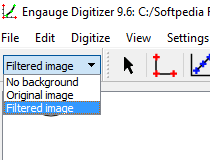

AveragestJoe liked Onion Omega2 with Industrial 4-20mA Sensors.Here’s a common workflow: “I want to overplot a curve from the literature on my new plot.maker2over wrote a comment on eXaDrums.Pokka liked Hacking powerful EV drivetrains.yOyOeK1 has added a new log for oiyshTerminal.trialexhill liked mini (Pi)QWERTY USB keyboard II.WJCarpenter liked DIY pocket thermal imager.has updated the project titled New opensource hardware 1U satellite project.xxxlzjxxx has added a new project titled LAN9514-USBTools.Ostracus on Trying (and Failing) To Restore A 1970s CDC 10MB Hard Drive.Joshua on MorphOS: A Modern Operating System For PowerPC.


#Engauge digitizer multiple curves software#
Posted in Software Hacks Tagged graph, software tools, tracing Post navigation Engauge is another graph digitizer, and we’ve also covered a photographic digitizer for servo splines. Looking through the Hackaday archives, we’ve covered this subject a couple of times before. There is also a handy video tutorial which you can see below the break.
#Engauge digitizer multiple curves code#
If WebPlotDigitizer has engaged your interest, you’ll be pleased to know that it’s open-source, and you can find all its code on GitHub. A few rogue points to remove perhaps, but it does a pretty good job. Hit the “View data” button, and there you have it. Click the “Run” button, and your data points appear. Select “Automatic mode” on the right hand side, then click “Pen” and mark the graph trace, then select the colour of the trace. You also tell it if the axes are logarithmic at this point. It asks what type of graph you’ve loaded, in this case a 2D X-Y plot. It asks you to identify four known points on the axes and supply their values. So, open the WebPlotDigitizer app, load the graph image captured from the sheet as a JPEG. We’re going to try digitizing the current gain plot from the 2N3904 datasheet (PDF) that we examined a few days ago. So how does it work? Load an image with a graph in it, select some points on the X and Y axis, roughly trace the curve with a marker tool, and set it in motion. If you’ve ever needed it, you’ll know what we mean. But it’s still worth talking about, because it’s one of those tools to keep in reserve. WebPlotDigitizer is not new, it’s been around for quite a few years now. But you can digitize the graph to get yourself a lot closer to the action, and to help you in your quest there’s a handy online tool. You can’t knock on the office door of the engineer who created it back in the ’80s, he’s probably in retirement and playing golf or growing prize petunias by now. Wouldn’t it be nice if you had access to the numbers behind the graph! Have you ever had to write a bit of code to interpret a non-linear analog reading as picked up by an ADC? When all you have to work with for your transfer function is a graph in a semiconductor datasheet that was probably written thirty years ago and prints out the size of a postage stamp, that’s a rather annoying task.


 0 kommentar(er)
0 kommentar(er)
